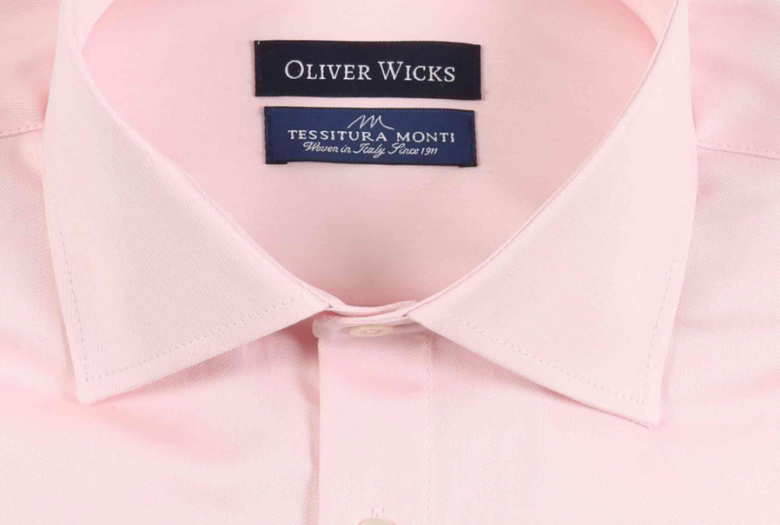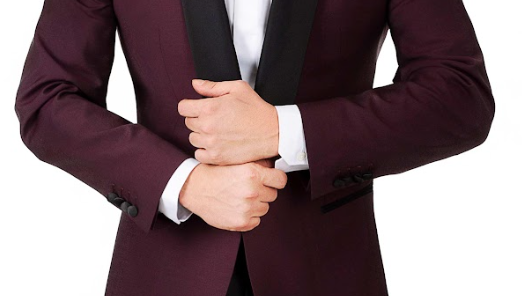The Anatomy of a Shirt: Terms Every Man Should Know
Even if you’re used to graphic tees and sweatpants, you probably have at least one go-to shirt in the wardrobe ready for interviews and formal events, right? Many modern men have a bit of a love-hate relationship with their shirts, especially if sartorial dressing doesn’t come easily to you. Unless you know how to fit and tailor one to your unique body, you might just think of them as the hot, unpleasant garments you have to wear on smart occasions - but a good shirt can be so much more. Effortlessly stylish, nearly always appropriate, and packed with the potential to express your style, a good shirt is your friend. Knowing more about the parts that make up your shirt, how to match them to your body, and matching them to the occasion, can help you embrace this ultimate item of menswear and make it your own. Here’s some pro tips from the Oliver Wicks team.
How Many Parts Does a Shirt Have?
A shirt is a shirt, right? Not quite. A shirt is a very structured garment, which is why so many men who may be unfamiliar struggle to get a comfortable fit. Each piece has its part to play and a role to fill, and they all need to sync well with your body shape to be comfortable and look good. There’s also a variety of cuts and styles for each part of the shirt to muddy the waters further. However, a basic men’s shirt will typically have these parts:
- Collar
- Hem
- Button Stand
- Shirt Front
- Shirt Back
- Yoke
- Cuff
- Placket
- Sleeves
Each part will vary from style to style, but you’ll find these parts on almost every man’s shirt - and knowing what they do and how to fit them is the secret to sartorial elegance no matter where you wear your shirt.
The Collar

The collar is one of the defining parts of a standard shirt. Technically, the area at the neck of any garment is a collar, so t-shirts and other tops have collars too. However, when we talk about parts of a shirt, the collar is the fabric that wraps around your neck and finishes the look of the neck formally. It adds style and creates a frame for your tie. While we commonly call everything above the shirt front the ‘collar,’ technically the collar itself is the fancier cut ‘flaps’ which attach to a collar stand - the part directly sewn to the shirt which goes around your neck. When you ‘pop’ your collar, you lift the collar off of the collar stand. But that’s very nuanced unless you are a tailor.
There’s a huge variety of collar types and styles. We’ve looked at how collars change the style of the shirt and its overall purpose and appearance before. In particular, you need to pair the right type of collar to your tie and tie knot to get the right balance of look and style.
As with the cuff, the collar of a formal shirt has ‘interlining.’ This just means there’s a piece of stiffening fabric between the layer that touches your skin and the outer layer, so it keeps a shape. These can be sewn in, or ‘fused.’ Fusing creates a thicker, tougher feel, and you’ll find it in most dress shirts.
Hem
Strictly speaking, any place where the fabric ends is called a hem. On a man’s shirt, the hem that matters most is at the bottom of the shirt. Hemming prevents the fabric from fraying and creates a neat visual line.
A seam is a hem made where two parts of fabric join. You will find seams all over the average shirt, but the critical ones for fit are the seam of the yoke, the side seam (running from the armpit to the bottom of the shirt), and the armpit seams (where the sleeves attach).
Button Stand

The button stand is actually the same thing as a placket, the gap where the buttons are at the front of the shirt (see below). This term, however, is commonly used by bespoke tailors - so, worth keeping in mind.
Shirt Front
You can likely guess, from its name, where this one is on a shirt - it is the chest panels of your shirt. They may have a yoke for stylistic reasons, or the panels may simply fall over the chest.
Shirt Back
Again, pretty easy to guess! The panel of fabric used to create the rear of your shirt. Again, it can have a yoke, or fall from the collar. If you see stitched-up seams made to shape the garment here, those are ‘darts.’ You’ll often see careful pleats here, designed to create a better shape for the shirt. If there is pleating, you need to make sure the shirt fits well and is correctly laundered and ironed, or you can look a little hunched.
For many men, the shirt back provides a key fitment area, as we keep a lot of muscle back there. Ensuring your shirt back doesn’t strain, and that the armpits are well sized for your arms, is an essential part of a smart fit. Otherwise, you look a little like a linebacker - or a mafia henchman - squeezed into a suit, and no one wants that! At Oliver Wicks, we are all about the fit that suits you and our team of experts offers custom suits (and shirts/chinos!) which are definitely worth adding to your wardrobe (think of it as an investment in quality)
Yoke
The yoke of a shirt is often a fit flashpoint for men. Go grab a shirt from your wardrobe. On the back of many designs, you’ll see a layer of stitching under the collar going straight across the upper part of your shoulders from armpit to armpit. There’s a flat panel that sits between this point and the neck - that’s the yoke. Sometimes you’ll see it on the front of a shirt, too.
The yoke is a stylistic panel designed to create a certain fit, so not every shirt has one. You should always buy quality if you’re opting for a shirt with a yoke. Cheap thread or poor stitching here is prone to shrink when the garment is washed, becoming uncomfortable to wear, creating a visual nightmare, and making the shirt difficult to iron or launder properly.
If there’s a line of stitching in the middle of the collar running vertically, too, that’s a split yoke. Western-styled shirts often have very elaborate, scalloped yokes as part of the design, and are probably the easiest way to visualize the yoke if you’re struggling.
Cuff

Cuffs finish off the sleeve, neatly. We’ve looked at the different styles of cuffs before - there are many, but they all serve the same function of ending the sleeve… neatly. Most modern shirts have the buttons or fasteners built in (a barrel cuff). Shirts with no obvious closure mechanism are typically designed to be used with cufflinks, and this style is typically reserved for only the most formal occasions.
Placket
The placket is a fancy way to say ‘the split.’ The gap at the front of the shirt where your buttons are is the placket. There are many placket styles, from the non-stiffened French placket to deliberately hidden plackets for formal shirts, but it’s always there - or you’d have to pull the shirt over your head to wear it. In fact, having a placket rather than being a pull-on is a key defining feature of a shirt. The sleeve placket is that small, finished ‘slit’ running from the collar into the sleeve, where it lets you get into the shirt more easily and tweaks the taper of the shirt.
Sleeves
Yes, we know - you understood this one already. But, it’s worth mentioning all the same! Shirts can have long sleeves or short sleeves, depending on their purpose. Outside of the office and in some hot weather destinations, short sleeve shirts are mostly associated with the trades, so you typically want to lean into a long sleeve. Finding a good fit at the point where your sleeve meets the shirt body is another essential part of having a comfortable shirt, so don’t forget to feel it out before buying.
Likewise, you need to make sure that the sleeve length is just right. Too long, and it will hang childishly over your hands. Too short, and it looks silly - plus, it feels deeply uncomfortable. Sleeve length is particularly critical to balance if you’re wearing a suit, sports coat, or blazer over your shirt, so take the time to find a great fit.
If your shirt slopes into the sleeve and doesn’t have a defined armpit ‘hole,’ it’s called a raglan sleeve, but this is more often found in women’s garments.
Conclusion
Now that you know more about the parts of a shirt, you can better evaluate the fit of any shirt. Shirts are an essential part of upgrading your style, and the fit is the key to enjoying them. Being better able to communicate with your tailor is always useful, too! If you’re curious about a high-quality, well-fitted shirt and how it should look, feel free to explore the Oliver Wicks shirt collection. Remember, no matter the fabric or style, you’ll find these parts on every shirt - now that you know what to look for! If you have any other questions, don’t hesitate to reach out to our team of experts at custom@oliverwicks.com. If you are looking for a practical guide, be sure to create a free account on our site where you’ll have access to instructional videos and measurement videos, helping you to easily have your measurements for that custom suit. You can also enjoy some extra styling tips, tricks, latest releases, and more if you sign up to our mailing list.
